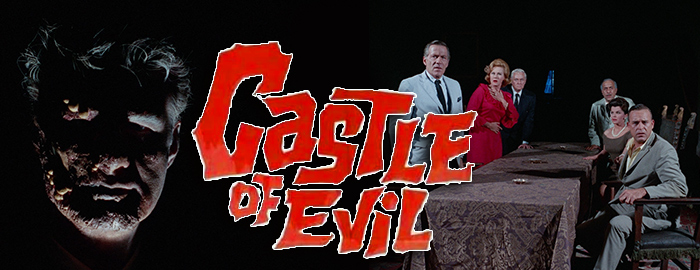
 VHS and TV for a while until the early '90s, Castle of Evil is a somewhat puzzling production
VHS and TV for a while until the early '90s, Castle of Evil is a somewhat puzzling production 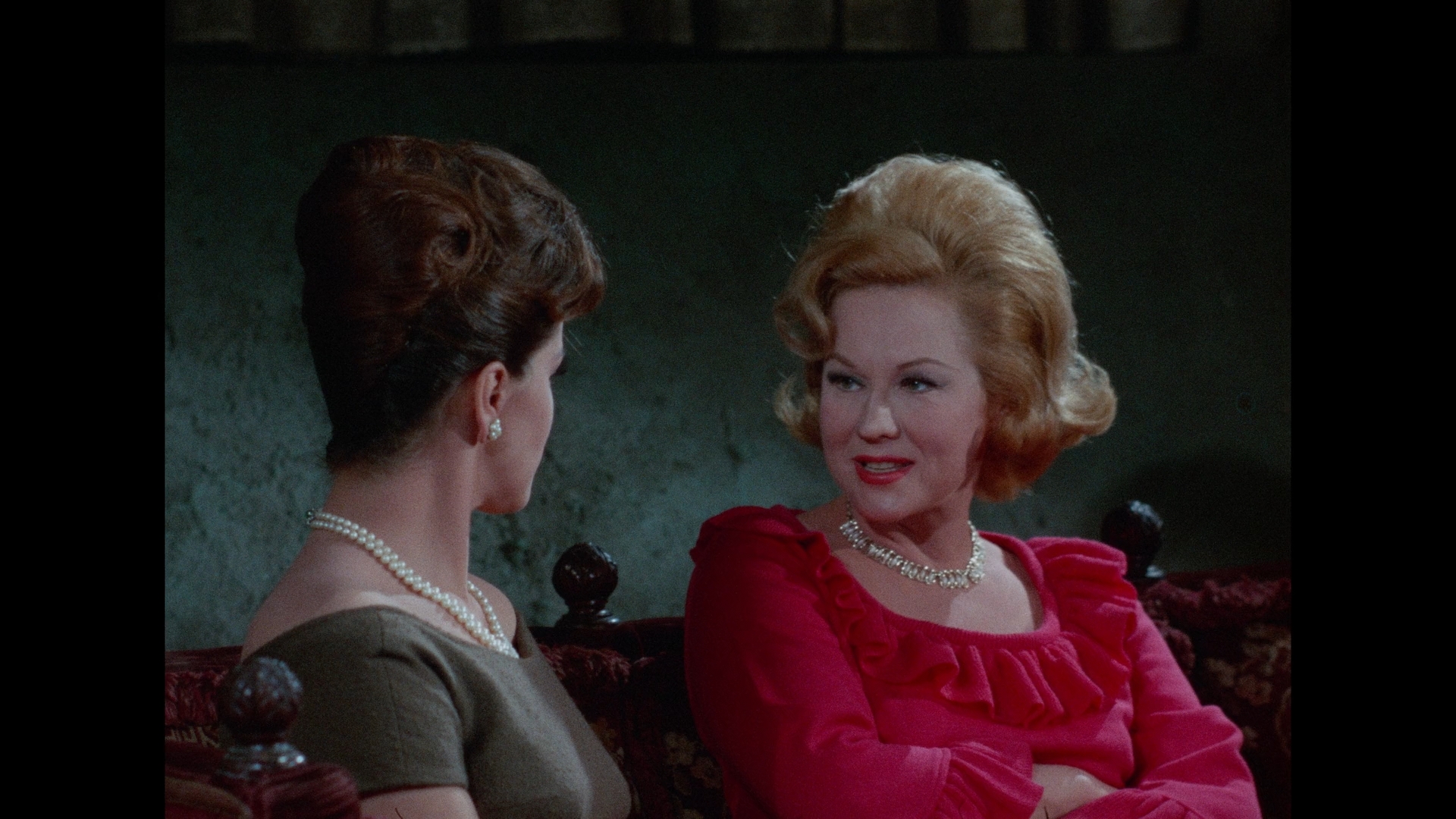 that looks and feels like an early made-for-TV movie -- which it sort of is given the fact that its initial distributor, World Entertainment Corp., sold it off for local broadcast around the same time it hit theaters on a double bill with Blood Beast from Outer Space. Though essentially a spook show of the kind that was already feeling mothworn by the 1940s, it throws in some sci-fi elements as well and was shot in very saturated color at a time that approach was rarely taken for this kind of story. Basically it's another variation on the old "random people get trapped together and killed off after the reading of a will" story, done with enough restraint that it could run on TV or show to a kiddie audience without a single edit.
that looks and feels like an early made-for-TV movie -- which it sort of is given the fact that its initial distributor, World Entertainment Corp., sold it off for local broadcast around the same time it hit theaters on a double bill with Blood Beast from Outer Space. Though essentially a spook show of the kind that was already feeling mothworn by the 1940s, it throws in some sci-fi elements as well and was shot in very saturated color at a time that approach was rarely taken for this kind of story. Basically it's another variation on the old "random people get trapped together and killed off after the reading of a will" story, done with enough restraint that it could run on TV or show to a kiddie audience without a single edit.  Robert (Brian),
Robert (Brian), 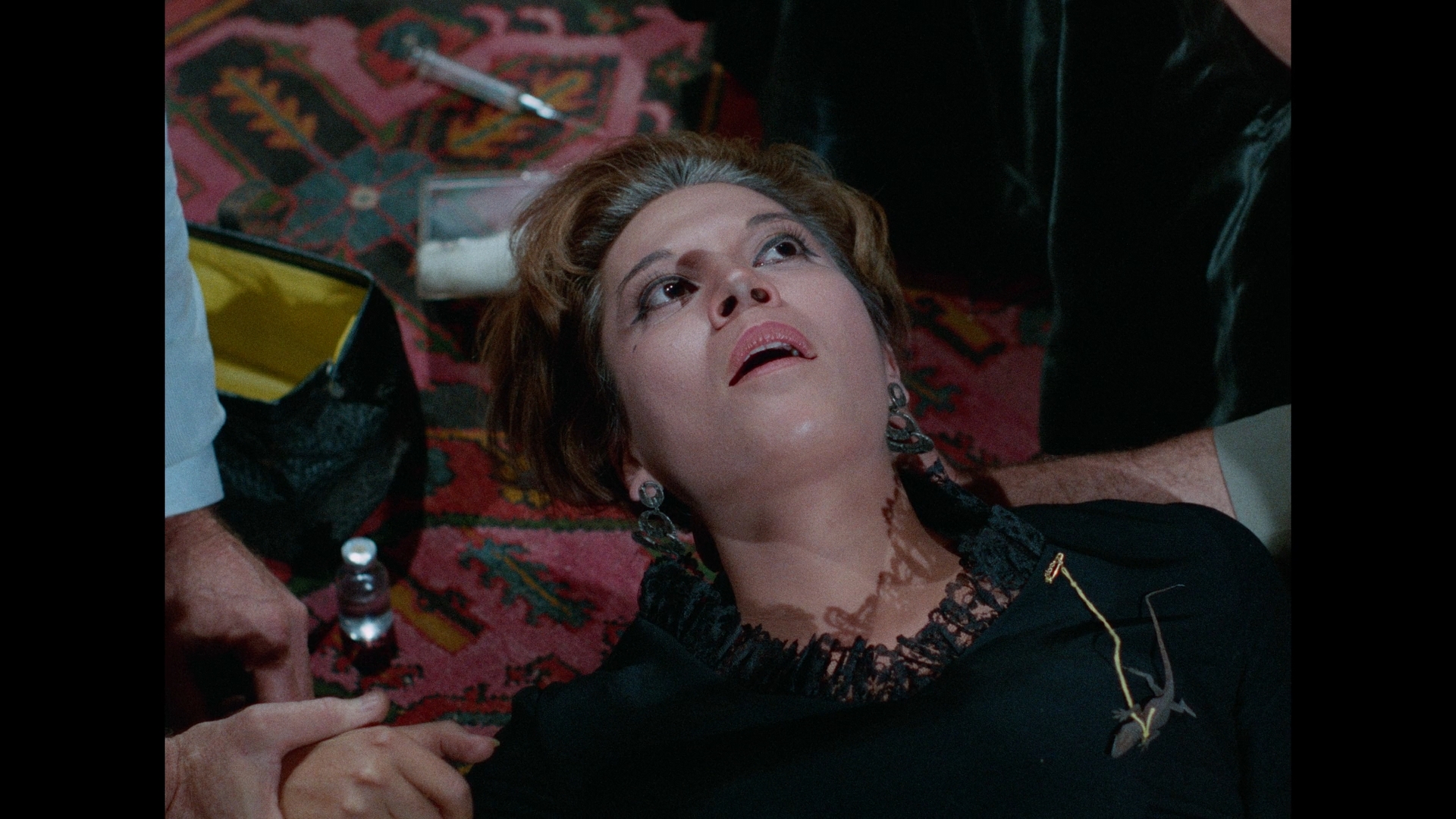 Tunki (Sarracino), and Doc Corozol (Marlowe). During the highly unorthodox will procedure, a spooky floating apparition of the dead doc appears and informs them that someone in their midst is his murderer -- and if they can identify the culprit to be brought to justice, they'll each get a portion of his estate at just under half a million each. Of course, it isn't long before murder strikes and a strange twist involving the dead "host" emerges.
Tunki (Sarracino), and Doc Corozol (Marlowe). During the highly unorthodox will procedure, a spooky floating apparition of the dead doc appears and informs them that someone in their midst is his murderer -- and if they can identify the culprit to be brought to justice, they'll each get a portion of his estate at just under half a million each. Of course, it isn't long before murder strikes and a strange twist involving the dead "host" emerges.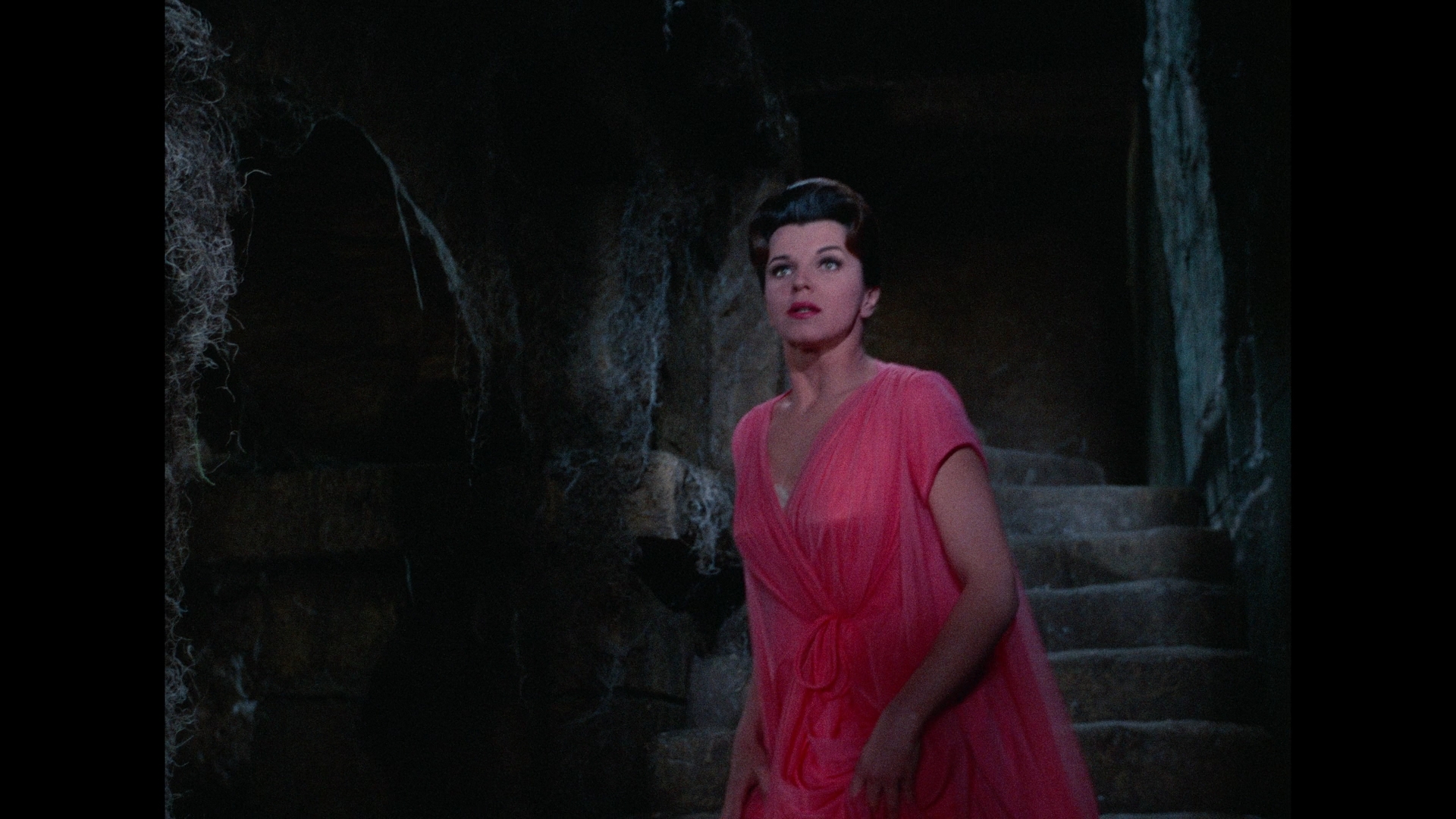 and home video versions were incredibly ugly, dupey eyesores for many years. After first turning up as fairly scarce VHS in 1984 from NTA (a.k.a. the original production company, National Telefilm Associates), the film was reissued in 1990 when the
and home video versions were incredibly ugly, dupey eyesores for many years. After first turning up as fairly scarce VHS in 1984 from NTA (a.k.a. the original production company, National Telefilm Associates), the film was reissued in 1990 when the 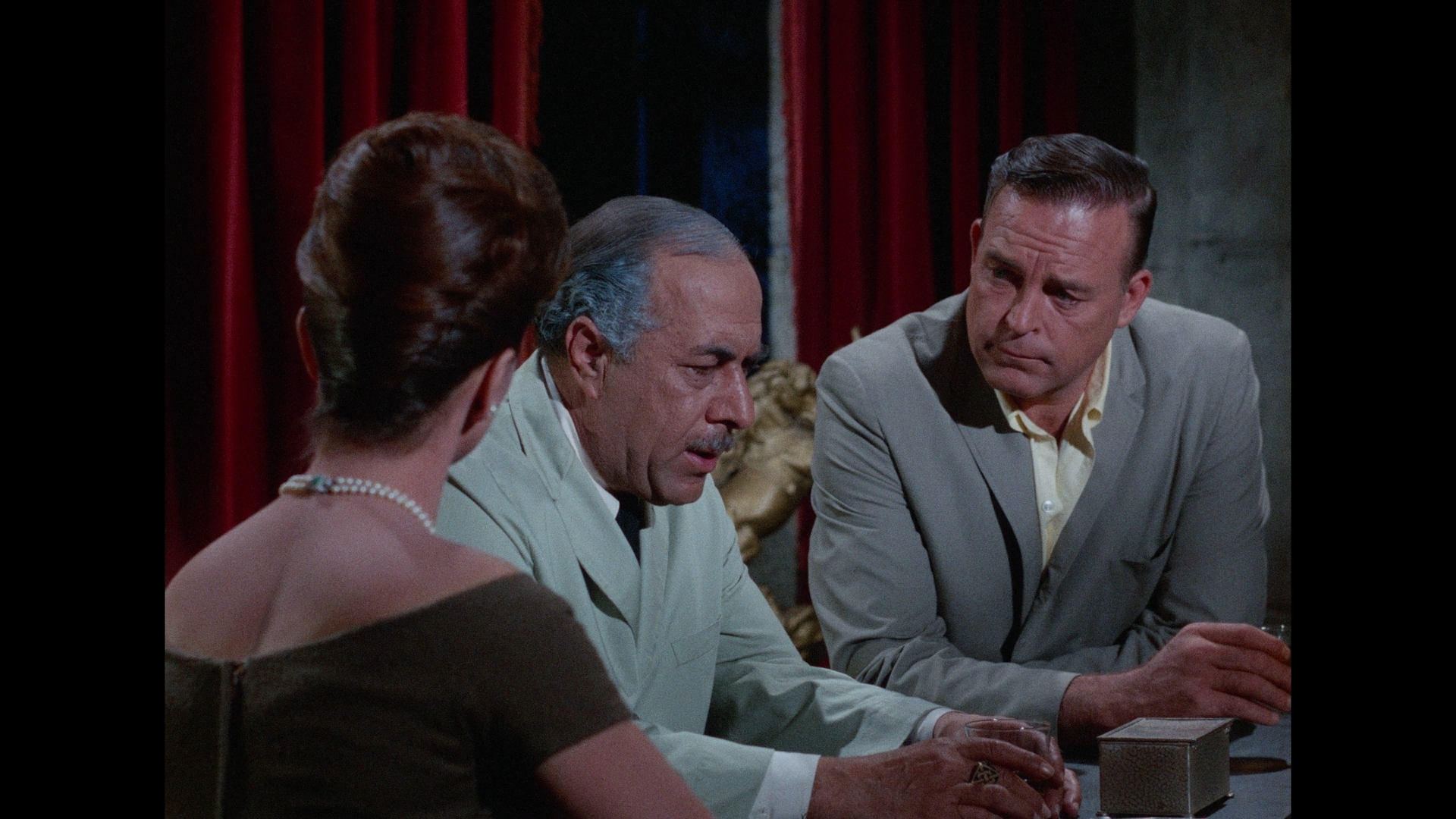 company became Republic Pictures. Neither of those options made for pleasant viewing, and after that the film followed its fellow Republic titles to Paramount where it languished in obscurity for quite a while. In 2025, Vinegar Syndrome delivered a Blu-ray special edition featuring what can only be described as a revelatory presentation from the 35mm original camera negative that wipes away all the grit and gunk that have plagued this for so long. The DTS-HD MA 2.0 English mono track is also a massive step up, now clear and clean without the hissing and rumbling we've been hearing, and the optional English SDH subtitles are solid as well. You also get not one but two substantial audio commentaries -- the first with the reliable Jonathan Rigby and Kevin Lyons, the second with Bill Bria and Ashley Coffin -- offering their own takes on the film and old dark house tropes as they also try to parse out plot holes, discuss the vagaries of indie American distribution in the '60s, and cover the careers of Lyon and Mayo among others. The one video extra is "Preserving the Legacy of Francis D. Lyon" (9m58s) with American Heritage Center professor Paul V.M. Flesher discussing the filmmaker's legacy to cinema hardly limited to his directorial contributions, the interesting background of the center's archive, the three different script drafts of this film, tand highlights from Lyon's letters and personal life.
company became Republic Pictures. Neither of those options made for pleasant viewing, and after that the film followed its fellow Republic titles to Paramount where it languished in obscurity for quite a while. In 2025, Vinegar Syndrome delivered a Blu-ray special edition featuring what can only be described as a revelatory presentation from the 35mm original camera negative that wipes away all the grit and gunk that have plagued this for so long. The DTS-HD MA 2.0 English mono track is also a massive step up, now clear and clean without the hissing and rumbling we've been hearing, and the optional English SDH subtitles are solid as well. You also get not one but two substantial audio commentaries -- the first with the reliable Jonathan Rigby and Kevin Lyons, the second with Bill Bria and Ashley Coffin -- offering their own takes on the film and old dark house tropes as they also try to parse out plot holes, discuss the vagaries of indie American distribution in the '60s, and cover the careers of Lyon and Mayo among others. The one video extra is "Preserving the Legacy of Francis D. Lyon" (9m58s) with American Heritage Center professor Paul V.M. Flesher discussing the filmmaker's legacy to cinema hardly limited to his directorial contributions, the interesting background of the center's archive, the three different script drafts of this film, tand highlights from Lyon's letters and personal life. ![]()